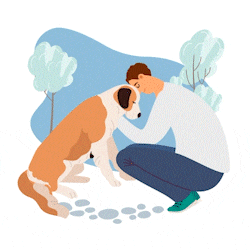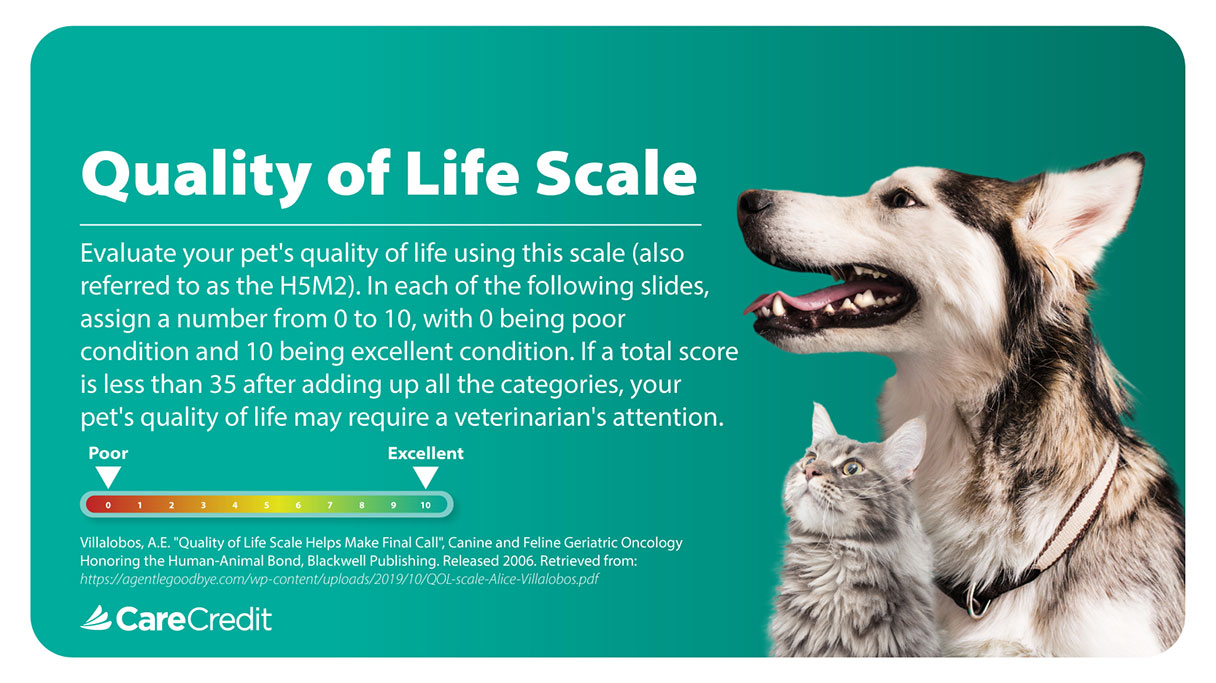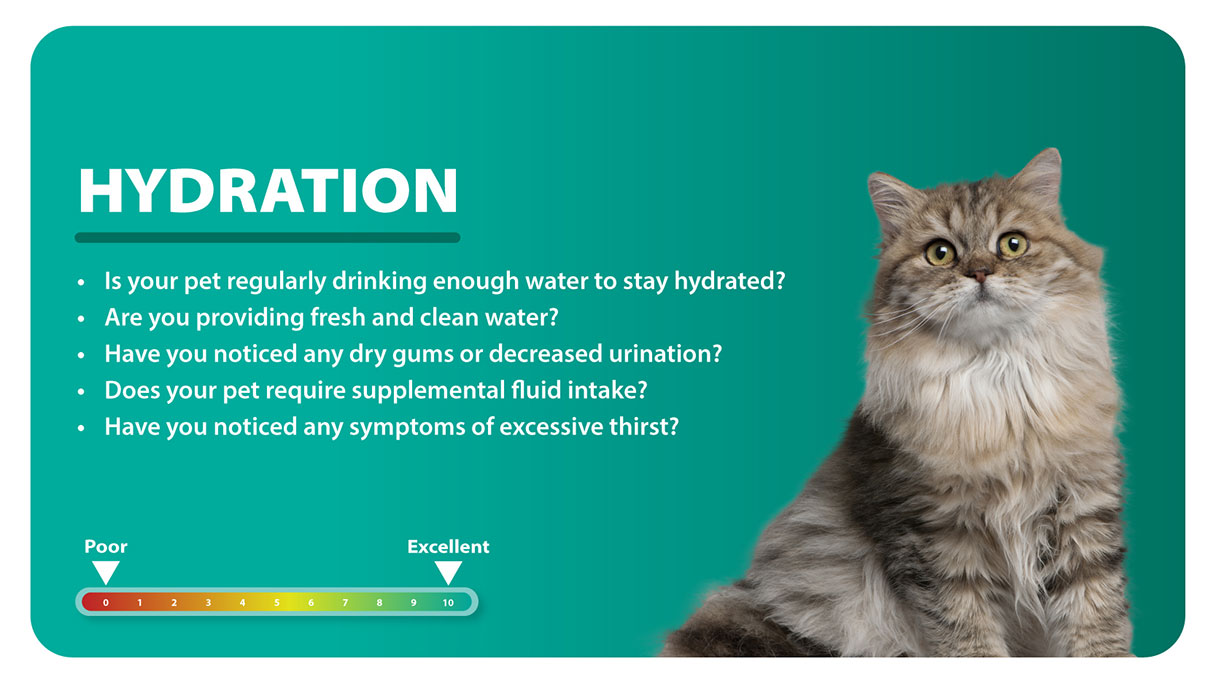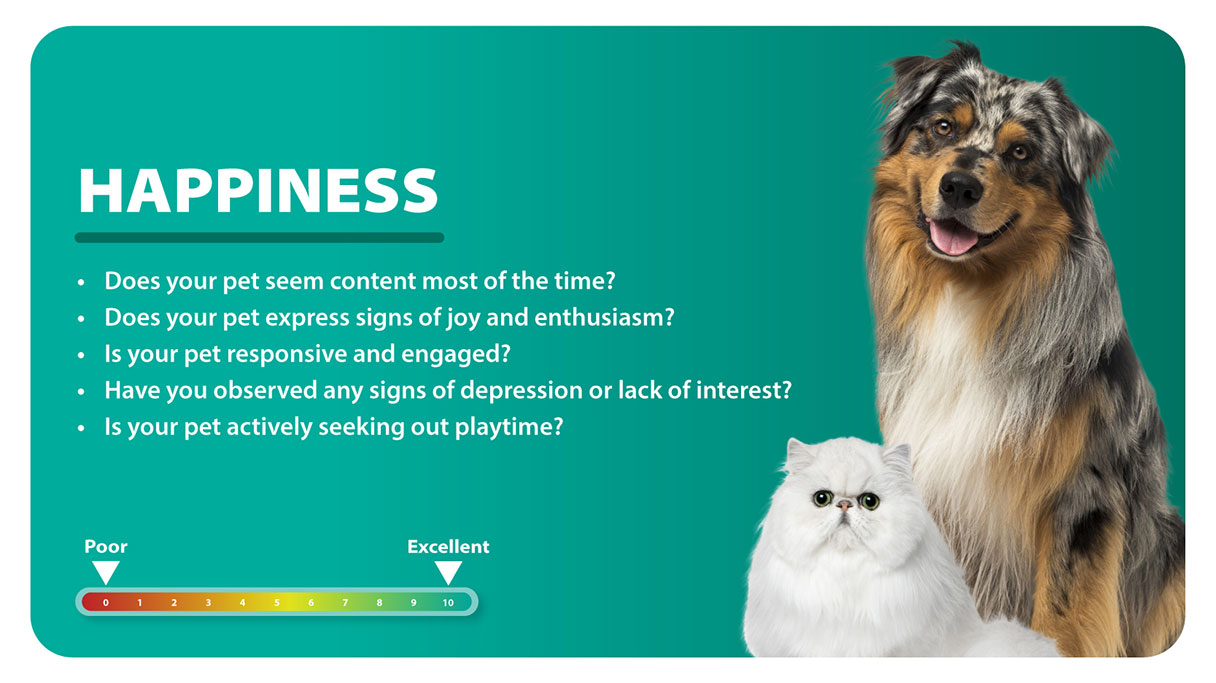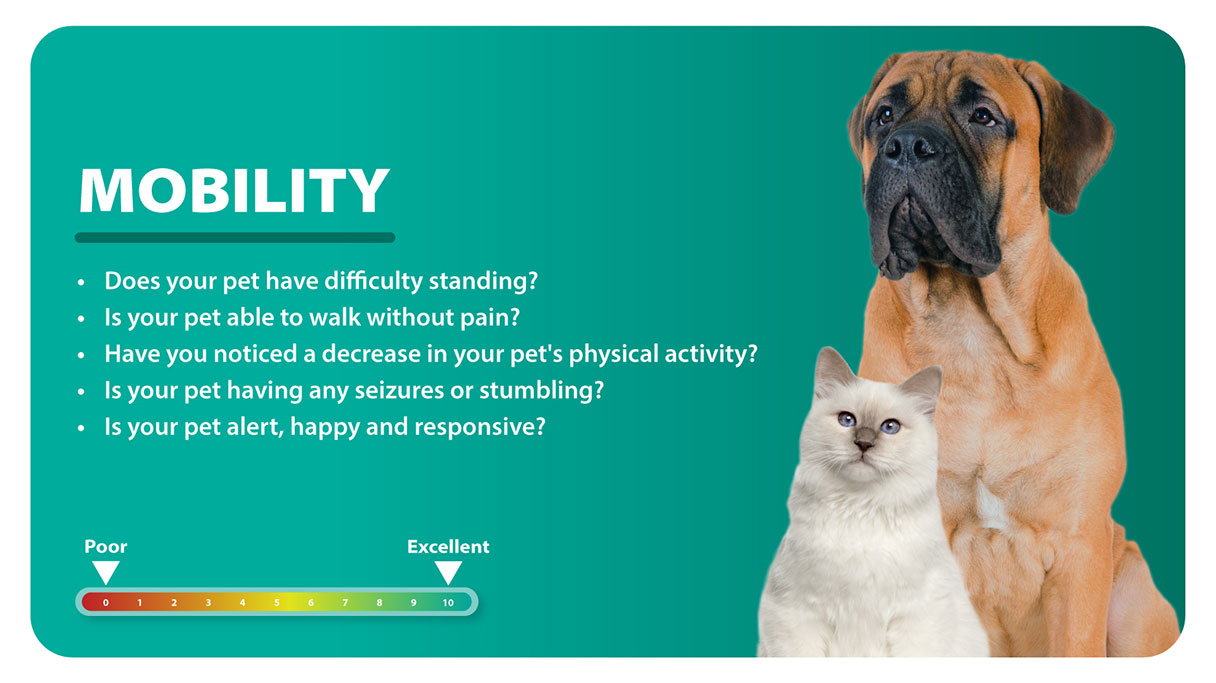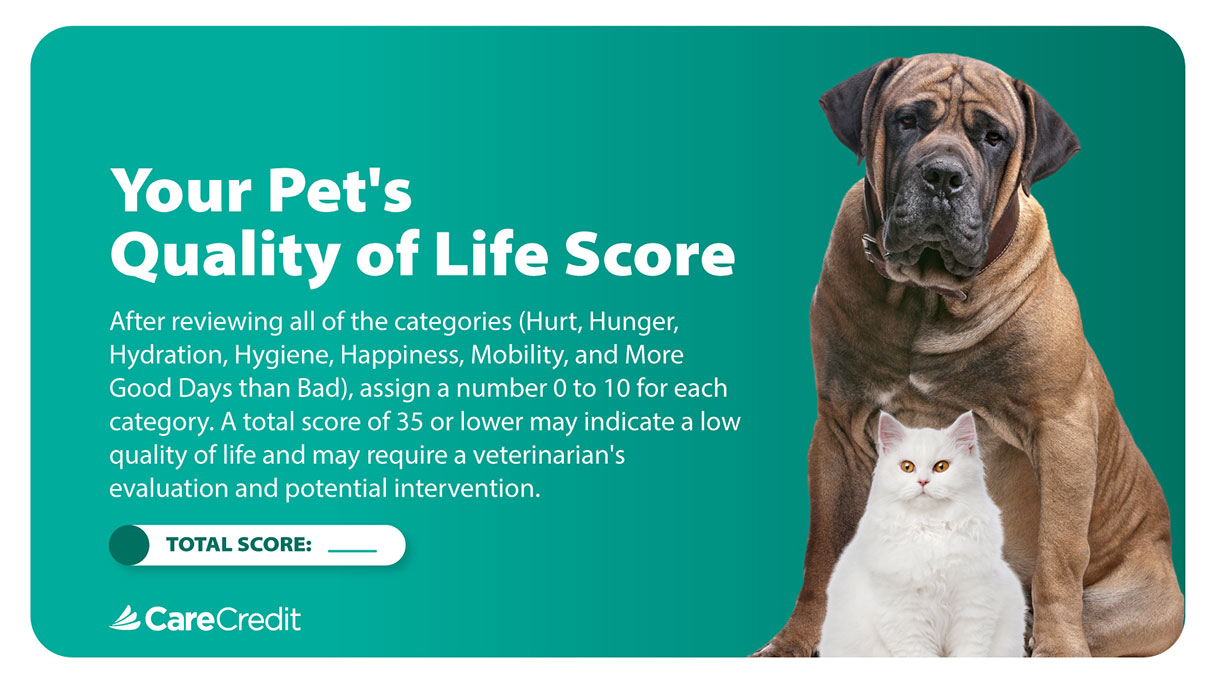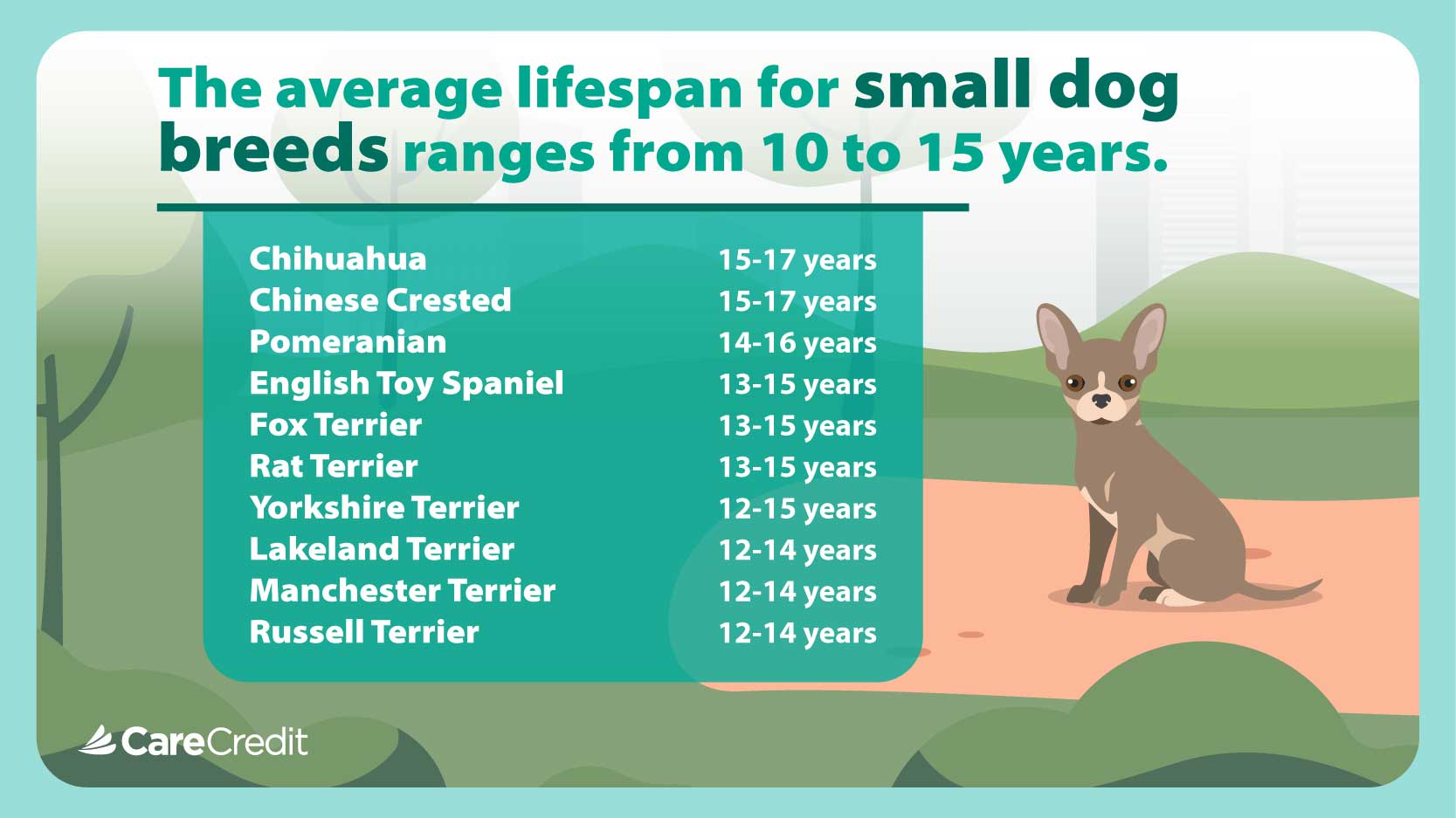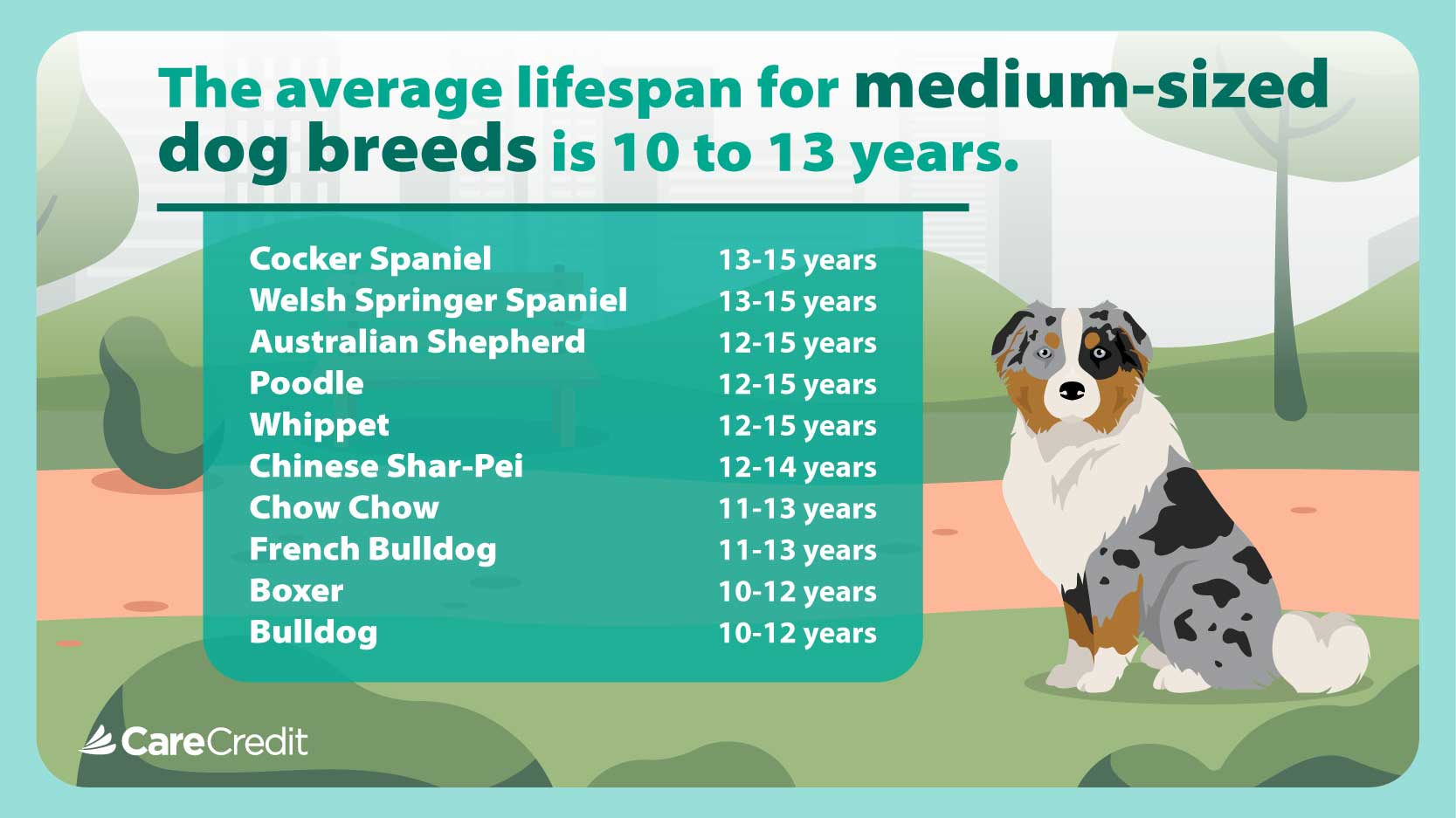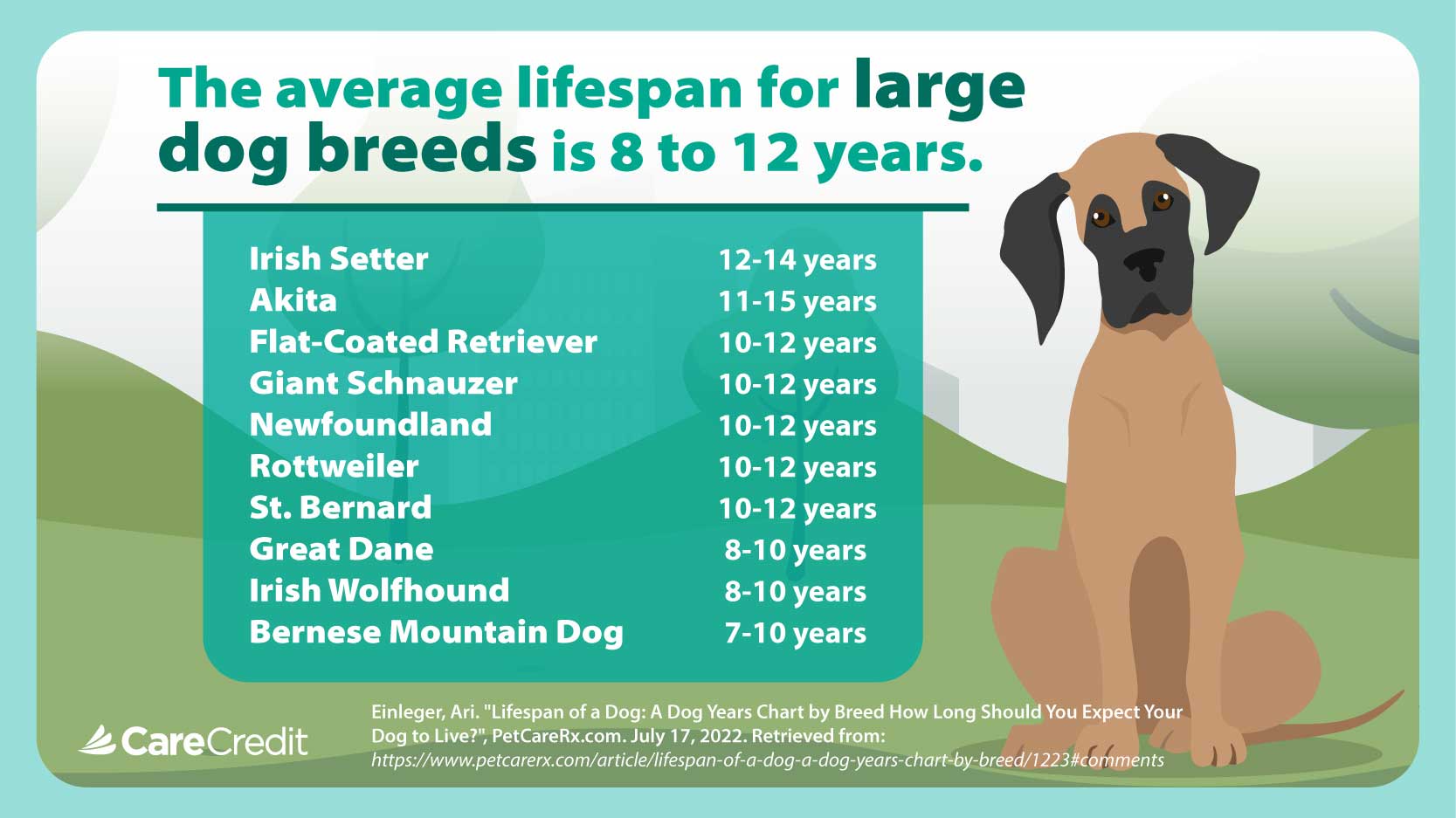Dog Dying Process: How Long Can It Take?
If your dog is showing signs of nearing the end of its life, you probably have many questions about what happens next. Above all, you probably want to know how long you have left with your beloved pup.
Your veterinarian is the best person to help answer this question for you. However, many dogs follow a similar pattern near the end of their lives that can look something like this:
3 months before passing
You may notice signs like weight loss, dehydration, duller eyes, less grooming and gastrointestinal signs like diarrhea or vomiting.
3 weeks before passing
Your dog may lose even more weight. You may notice signs that they are in pain or discomfort. You may also observe some breathing problems, changes in behavior (like confusion, clinginess or self-isolation) and depression or anxiety.
Days before passing
Your dog may seem distant and uninterested in what's going on around them. They may become more restless than usual or stiller. You might also notice a change in your dog's odor.
How Long Do Dogs Live?
Smaller dogs generally live longer than larger ones, but a dog's average lifespan varies by breed.
Small dogs: 10-15 years
| Breed | Lifespan |
|---|---|
| Chihuahua | 15-17 years |
| Chinese crested | 15-17 years |
| English toy spaniel | 13-15 years |
| Fox terrier | 13-15 years |
| Lakeland terrier | 12-14 years |
| Manchester terrier | 12-14 years |
| Pomeranian | 14-16 years |
| Rat terrier | 13-15 years |
| Russell terrier | 12-14 years |
| Yorkshire terrier | 12-15 years |
Medium-sized dogs: 10-13 years
| Breed | Lifespan |
|---|---|
| Australian shepherd | 12-15 years |
| Boxer | 10-12 years |
| Bulldog | 10-12 years |
| Chinese shar-pei | 12-14 years |
| Chow chow | 11-13 years |
| Cocker spaniel | 13-15 years |
| French bulldog | 11-13 years |
| Poodle | 12-15 years |
| Welsh springer spaniel | 13-15 years |
| Whippet | 12-15 years |
Large dogs: 8-12 years
| Breed | Lifespan |
|---|---|
| Akita | 11-15 years |
| Bernese mountain dog | 7-10 years |
| Flat-coated retriever | 10-12 years |
| Giant schnauzer | 10-12 years |
| Great Dane | 8-10 years |
| Irish setter | 12-14 years |
| Irish wolfhound | 8-10 years |
| Newfoundland | 10-12 years |
| Rottweiler | 10-12 years |
| Saint Bernard | 10-12 years |
End-of-Life Care: How to Help a Dying Dog
While all dogs are different, there are several things you can do to help ease your dog's passing over the rainbow bridge:
- Avoid prolonging their suffering: Talk to your vet about your options. Ask for their advice and what they would do in the same situation.
- Manage their pain: Medication can help your dog feel better if they are in pain. A pet-safe heating pad can also help older dogs who are stiff and achy. Limit the amount of walking your dog needs to do if walking causes them pain.
- Help them drink: Offer your dog clean water at intervals. You can also use a turkey baster to squeeze water or low-sodium broth into their mouth.
- Offer treats: Nothing is off the table (with the exception of toxic foods for dogs such as grapes and chocolate). Enjoy spoiling your pup with things they don't get often.
- Lower stress: Create a calm and quiet environment. This may mean keeping them away from high-energy people (kids) or other pets.
- Continue routines: Avoid big changes in your dog's day-to-day activities and environment. Familiar routines can help your dog manage anxiety and depression.
- Be present: Spend time with your dog. Your presence can help keep your dog calm and know they are loved, even if it's just sitting next to them.
- Be prepared to let go: Learn your options for helping your dog pass over the rainbow bridge. For example, if you think a trip to the vet will cause stress, you may consider an in-home end-of-life experience.
Preparing to Say Goodbye to Your Dog
It is important to remember that while the symptoms above can be signs that a dog is dying, they can also be signs of treatable medical conditions. Therefore, if you are concerned about your dog's health or think it is dying, it is best to visit your veterinarian for an examination. This will also allow you to discuss end-of-life care options for your beloved pet, if necessary.
Palliative care
Consider asking your veterinarian about your options for palliative care, which can help make your dog's final days more comfortable. This may also be a good time to discuss the process of euthanasia and timing with your vet.
Know that if euthanasia is needed, your veterinarian can likely provide that service. Some providers, such as Lap of Love, can perform the service in your home and handle aftercare needs.
Memorials and imprints
Before you say goodbye to your furry family member, you may want to take some time to consider how you'd like to remember them. For example, you may wish to consider creating a bucket list for your pet or revisit some of your pet's favorite places and activities during their final days.
Consider whether you'd like to memorialize your pet by taking ink or clay imprints of their paws.
Final arrangements
Finally, you'll need to consider how you'd like to handle your pet's remains. For example, you may choose to bury your pet or have them cremated. Your veterinarian can help you decide which option best fits you and your family's needs. Many in-home euthanasia services can help with these decisions as part of the service.
Managing Your Grief
Losing a pet is a painful and often inevitable part of owning and loving animals. Take the time you need to grieve their loss, even if you feel silly about it. For many of us, pets are family members.
Here are some things you can try as you move through your grief:
- Print out pictures and create ornaments or a photo album
- Talk to the people in your life about how you feel
- Write down things you love about them — memories you never want to forget
- Connect with a pet loss support group
- Create a digital memorial page or a physical memorial
- Above all, know that you are not alone
Saying Farewell to Your Dog
Pet loss is difficult, but knowing the signs that a dog may be dying can help ensure you'll know when the time comes. Remember that these signs can occur with many health conditions, so it is essential to have your dog evaluated by your veterinarian to determine the severity of your dog's illness. By knowing the signs, you can prepare in advance to help ensure that your dog's last days with you are full of love and light.
Frequently Asked Questions
Do you still have questions about a dog's end of life? Here are some answers to commonly asked questions on this topic.
The CareCredit Credit Card Is Here to Help
Saying goodbye to your beloved pet can be one of the hardest things we do, but the CareCredit credit card can be there for you when you need it.* Whether it's your first veterinary visit or your last, CareCredit is here to help you manage the costs of your pet's care. Find a veterinarian near you that accepts CareCredit and download CareCredit Mobile App today to manage your account, find a provider on the go, and easily access the Well U hub for more helpful articles, podcasts and videos.
In addition to pet care, you can also use your CareCredit credit card for dentistry, cosmetic, vision, hearing, health systems, dermatology, pharmacy purchases, spa treatments and so much more within the CareCredit network. How will you invest in your health and wellness next?
Author and Care Expert Bio
Dr. Kathy Wiederkehr (Wentworth), V.M.D.
Dr. Kathy Wiederkehr (Wentworth) has been practicing veterinary medicine at pet care facilities in California since 2001. Most recently, she served as medical director of the VCA PetPoint Medical Center and Resort in Irvine. She is a graduate of the University of Pennsylvania School of Veterinary Medicine and became board-certified as a diplomate in Canine and Feline Practice by the American Board of Veterinary Practitioners in 2010.
Featured Video Care Expert
Dr. Jeff Werber, D.V.M.
Dr. Jeff Werber has been a practicing veterinarian for 39 years and sees his patients at Value Vet in Westwood, California. In September of 1997, Werber became the pet expert for CBS News in Los Angeles, where he was awarded an Emmy for his pet health reporting. He is currently a frequent contributor to CNN, E! Entertainment, KCBS/KCAL-Los Angeles, KTLA, and Inside Edition.





